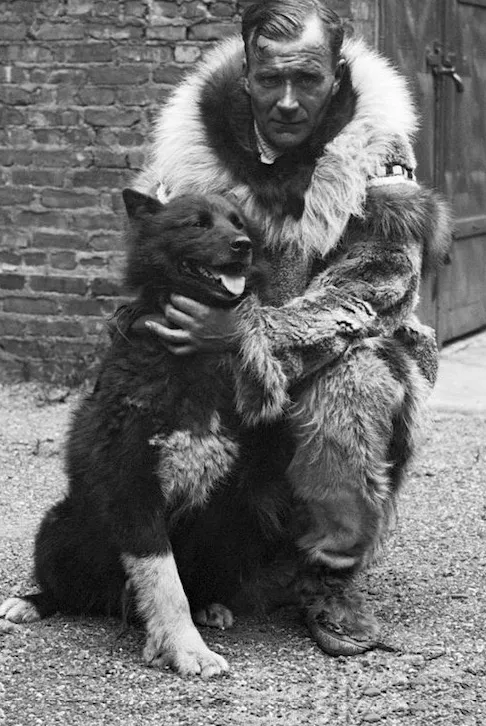In the unforgiving grip of January 1925, a silent, deadly menace descended upon Nome, Alaska. Doctors in the isolated outpost began to identify symptoms of diphtheria, a highly contagious and often fatal bacterial infection. With winter temperatures plummeting to 50 below zero and snowdrifts measured in yards, Nome was effectively cut off from the outside world. The nearest supply of life-saving antitoxin serum lay more than 500 miles away in Anchorage, an impossible distance for conventional travel. Planes were grounded by the extreme conditions, and the only path through the frozen wilderness was the treacherous 650-mile Iditarod Trail, a freight route that connected Nome to the railroad station in Nenana.
The Dire Straits of Nome: A City Under Threat
The diphtheria outbreak posed an existential threat to Nome, particularly to its vulnerable child population. Without the antitoxin, the epidemic was predicted to claim thousands of lives. The urgency was palpable; the serum needed to reach Nome swiftly, a timeline that a single dog sled team, which typically took about a month to traverse the route, could not possibly meet. The only hope was an ambitious, unprecedented relay effort, a desperate race against time and nature’s fury that would etch itself into history as the “Great Race of Mercy.”
The Great Race of Mercy: A Relay Against Time
This extraordinary endeavor called for immense courage and endurance, drawing together 20 dedicated mushers and an estimated 150 sled dogs. The serum, packed securely, arrived by train at Nenana on January 27, marking the official start of the relay. Each team was tasked with covering segments ranging from 24 to 52 miles, passing the precious cargo from one musher to the next. Among the volunteers were legendary figures like Leonhard Seppala, who possessed some of the finest sled dogs available – resilient Siberian Huskies, direct descendants of imported stock. Seppala placed his trust in his most experienced leader, the remarkable 12-year-old Togo, who was destined to cover the longest and most perilous stretch of the entire journey. As the relay progressed, the final leg would fall to another musher, Gunnar Kaasen, and his promising yet relatively green lead dog, a three-year-old named Balto. To delve deeper into the combined efforts of these canine heroes, discover the real story of Balto and Togo.
 Balto the Siberian Husky sled dog posing with musher Gunnar Kaasen, historic photo of the 1925 serum run hero
Balto the Siberian Husky sled dog posing with musher Gunnar Kaasen, historic photo of the 1925 serum run hero
Balto’s Heroic Final Dash
The conditions faced by these teams were unimaginable: blinding blizzards, sub-zero temperatures, and unpredictable ice. Many mushers suffered frostbite, and some dogs were injured, yet they pressed on, driven by the knowledge of what awaited Nome. When the serum reached the final team led by Balto and Kaasen, the elements were at their most brutal. Winds howled, creating whiteout conditions that made it impossible to see. Visibility was so poor that Kaasen could barely discern his lead dogs. Yet, Balto, despite his relative inexperience, rose to the challenge. His innate instinct and unwavering determination kept the team on course, navigating the treacherous terrain and even guiding them when the sled, at one point, was lifted high into the air by violent gusts. For more details on the final leg of the journey and the canine hero, explore the real Balto dog. Against all odds, Balto and Kaasen charged into Nome just before dawn on February 2. The entire 650-mile journey, which normally took a month, had been completed in an unimaginably swift 127.5 hours – approximately five and a half days. The precious cargo was delivered, and Nome was saved.
An Enduring Legacy: Balto’s Place in History
While the “Great Race of Mercy” was a testament to the collective efforts of many brave mushers and dogs, Balto, having led the final, dramatic sprint into Nome, quickly became the enduring symbol of this heroic feat. He represented teamwork, raw courage, sheer tenacity, and the unwavering spirit of hope in the face of despair. Balto passed away in 1933 at the age of 14, but his legacy, and all that he stands for, continues to resonate today. Millions remember his incredible journey, a testament to canine bravery. To learn more about how this brave canine earned his place in history, read about the bravest dog ever: the true story of Balto.
Children and adults alike visit his bronze statue in New York City’s Central Park, a perpetual tribute to his bravery. Another lasting memorial is found at the Cleveland Museum of Natural History, where a special exhibit preserves and shares his compelling story with new generations. The spirit of the serum run is also celebrated annually with the Iditarod Trail Sled Dog Race, where teams from around the world follow a similar route, honoring the path of the original heroes. Balto’s story even captivated Hollywood, leading to an animated film of the same name in 1995, produced by Amblin Entertainment, which introduced his tale to a global audience and solidified his place in popular culture. Dive deeper into the complete narrative of this legendary canine by exploring the comprehensive story of Balto the dog.
 Bronze statue of Balto the heroic sled dog in Central Park, New York City, honoring his bravery in the Great Race of Mercy
Bronze statue of Balto the heroic sled dog in Central Park, New York City, honoring his bravery in the Great Race of Mercy
The Story Of Balto The Dog is more than just a historical account; it’s a powerful reminder of the extraordinary bond between humans and animals, and the incredible courage that can emerge in the direst of circumstances. His name, forever linked to the “Great Race of Mercy,” continues to inspire tales of heroism and perseverance for all who hear it.
